Wall Decorating Ideas
Minimalist vs Maximalism Wall Art: Finding the Perfect Decor Style for Your Home
Imagine walking into a room with empty walls—what kind of art would bring it to life? Two striking styles stand out: minimalism and maximalism. One embraces simplicity and clean lines, while the other thrives on bold, eye-catching designs. More than just décor, these styles set the tone for an entire space. This guide will explore both and help you decide which best suits your home.
What is Maximalism? More is More!
Maximalist wall art is bold, colorful, and filled with details. It follows the idea that “more is more” and creates spaces that feel lively and full of personality.
It’s the opposite of holding back, embracing abundance, and filling spaces with things you love.
This style started as a reaction against minimalism, which focuses on having very little.
Key Features of Maximalist Wall Art:
Here are some key things that make maximalist wall art stand out:
- Bold and Vibrant Colors: Maximalist art loves bright, intense colors. Think deep blues, fiery reds, sunny yellows, and lush greens all mixed. The more color, the better!
- Mixing Patterns: Instead of choosing just one pattern, maximalism encourages using many different ones in the artwork or on the same wall. For example, flowers might be next to stripes or geometric shapes mixed with animal prints.
- Lots of Textures: Texture adds another layer of interest in maximalist art. You might see smooth surfaces next to rough ones, fabrics, and other materials incorporated.
- Layering: Maximalists love to layer different art pieces and decorations on their walls. For example, they might hang a painting over patterned wallpaper or display several pieces of art close together.
- Ornate Details: Fancy details and embellishments are a big part of maximalism. Think of frames with lots of carvings or artwork with intricate designs.
- Filling Empty Spaces: Maximalists generally don’t like a lot of space on their walls. They believe in filling up the area with things that catch the eye.
While it might seem like just throwing a bunch of things together, there’s often a thoughtful approach to maximalism.
It’s about carefully choosing and arranging colors, patterns, and textures to create a visually rich and exciting space.
This style has roots in historical movements like Art Nouveau from the late 1800s and was also popular in the Victorian era, where more was often seen as a sign of beauty and prosperity.
Examples of Maximalist Art & Artists
Let’s look at some examples to understand better what maximalist wall art looks like.
Artists like Gustav Klimt, famous for his painting “The Tree of Life,” used lots of gold and swirling lines, creating a very detailed and opulent look.
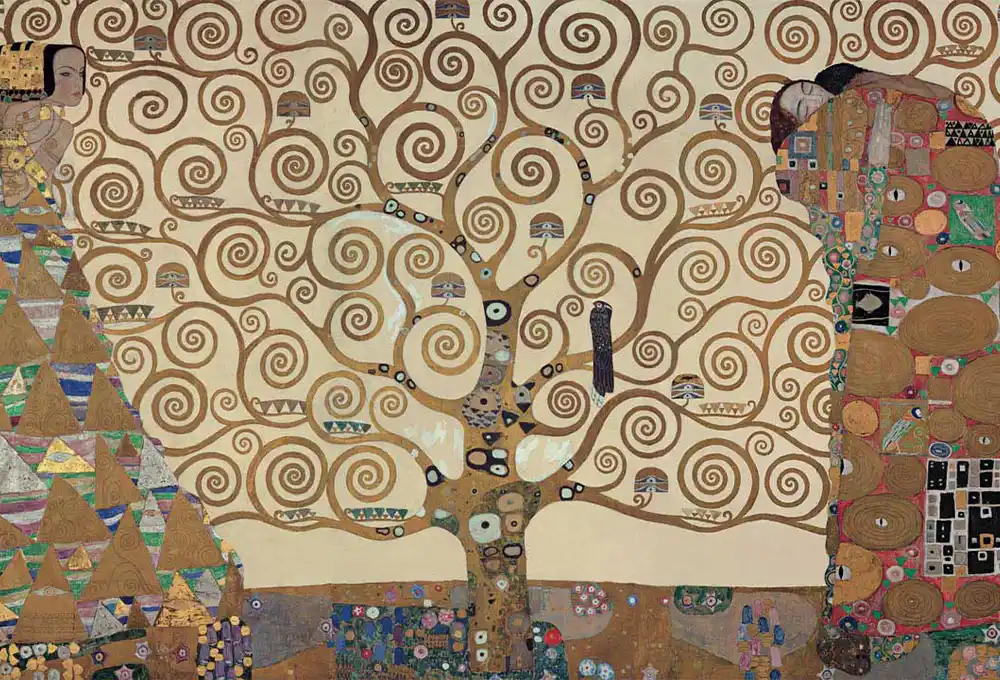
Jean-Michel Basquiat was another artist known for his bold colors and many elements in his paintings, such as in his “Untitled, 1981”.
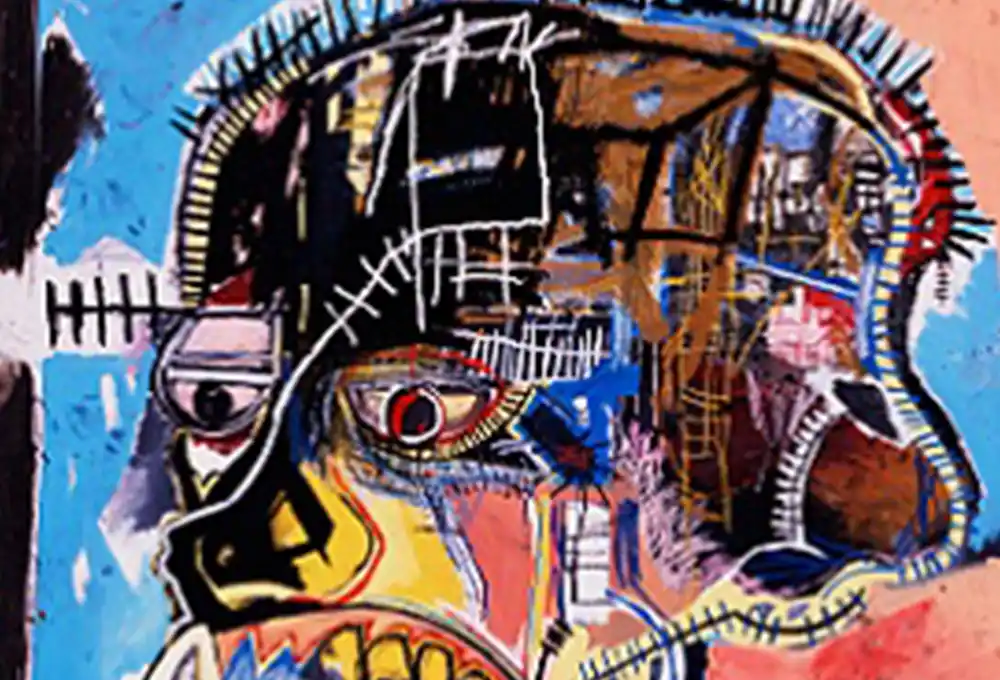
In modern art, you might see pieces that mix vibrant colors with different shapes and textures. For example, “Anna’s Chair” by Kate Lewis uses rich colors to create a striking piece.
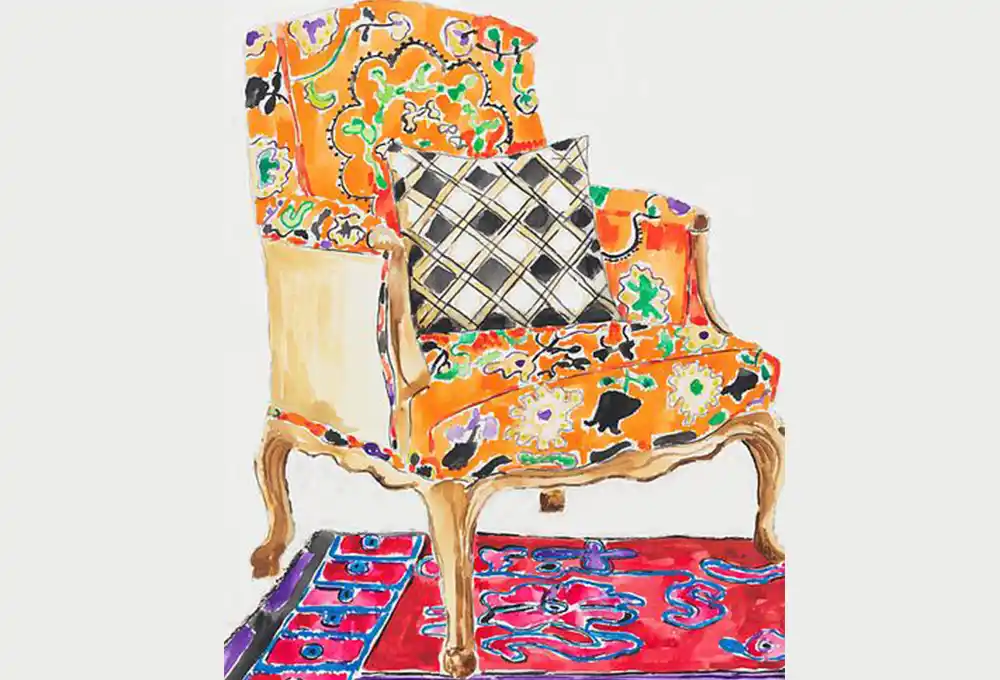
Jennifer Sanchez’s “NY1849” is another example of bright and colorful patterns coming together excitingly.
Displaying Maximalist Art
Creating a gallery wall is a widespread way to display maximalist wall art. This involves hanging different art pieces together, often in various styles, colors, and patterns.
On the same wall, you might see a mix of old and new art, photographs, and even decorative objects.
Maximalist art can also include influences from different cultures and periods, like patterns inspired by African textiles or the grandeur of Baroque art.
Some artists even use mixed media, combining paint, photography, and fabrics, as in the work of Miriam Shapiro, who used quilting, paint, and lace in her art.
How Maximalism Feels
When you walk into a room with maximalist wall art, you might feel a sense of energy and life. The mix of vibrant colors and many different elements can create a lively and dynamic environment.
This style lets a person’s bold and expressive personality shine through. Because maximalism often involves displaying things you love and that have meaning to you, it can create a feeling of personal connection and storytelling within a room.
It reflects your individuality and passions, showcasing a curated collection of items that are special to you.
Maximalist wall art is often visually rich and captivating; there’s always something new to look at and discover. Its boldness and abundance can make a statement and grab your attention.
Rooms with maximalist art can feel exciting and comforting because they are filled with things the owner loves.
While it might look like a lot is going on, well-done maximalism often has a sense of organized chaos, where everything feels intentionally placed.
What Is Minimalist Wall Art?
Minimalist wall art follows the “less is more” idea. It uses simple designs, few colors, and lots of space. Think of a single black line on a white canvas or a photo with just one subject against a plain background.
If maximalism shouts, minimalism whispers! Where maximalism loves abundance, minimalism prefers to keep things clean and uncluttered. It often emerged as a reaction to styles that were seen as too emotional and expressive.
Key Features of Minimalism:
Here are some key features of minimalist wall art:
- Few Colors: Minimalist art typically uses a limited number of colors, often sticking to neutral tones like white, black, and gray. These colors can create a calming effect.
- Simple Shapes and Clean Lines: Geometric shapes like squares, circles, rectangles, and straight, clean lines are common in minimalist art.
- Single Statement Piece: Instead of many items, minimalist rooms often feature just one or a few carefully chosen pieces of art that have a substantial impact.
- Emphasis on Negative Space: The space around and within the artwork is very important in minimalism. It helps to highlight the principal elements and creates a sense of openness.
- Lack of Ornamentation: Minimalist art avoids fancy details and unnecessary additions. It focuses on the basic form and materials.
- Objective Approach: Minimalist art often aims to be objective, focusing on the materials and form of the art itself rather than trying to express personal emotions or tell a story 21. It’s often about the viewer’s direct experience with the artwork.
Minimalism is about focusing on the essential elements and stripping away anything that isn’t needed. It can reduce visual clutter and create a sense of calm and peace in a room. The focus on the materials and form of the art highlights the inherent qualities of what it’s made of.
Examples of Minimalist Wall Art
There are many examples of minimalist wall art.
Artists like Frank Stella, known for his striped paintings and “Black Paintings,” used simple geometric patterns.
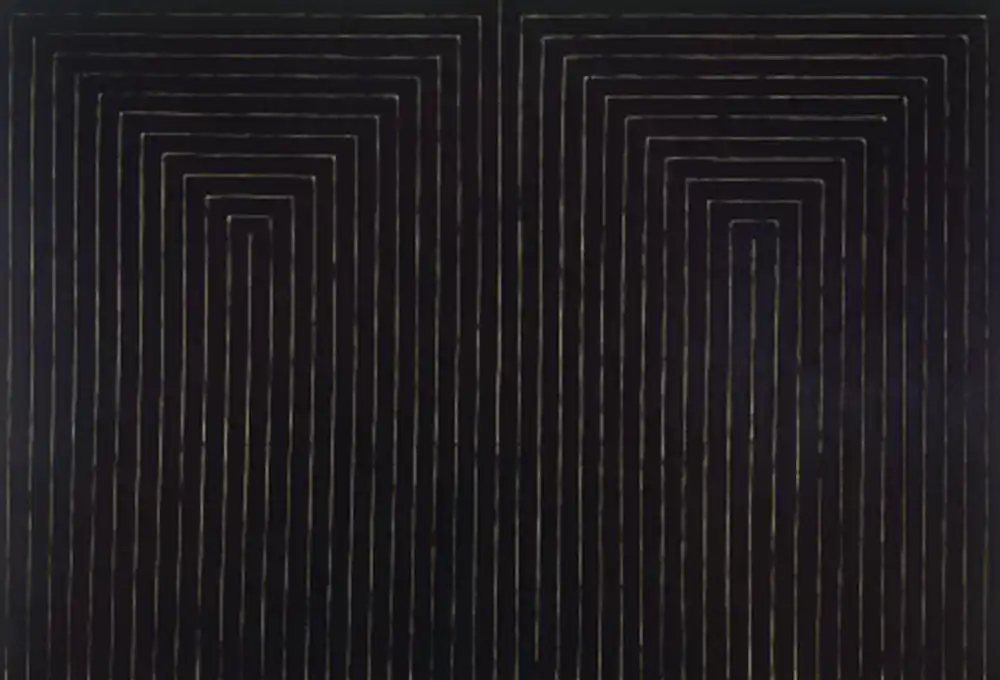
Donald Judd created sculptures using basic geometric forms like steel or iron boxes.
Agnes Martin was famous for her paintings featuring subtle grids and light colors.
Other examples include simple line drawings of things like faces, plants, or abstract shapes in neutral colors.
Sometimes, minimalist wall art uses simple text with an inspiring or funny message. Black-and-white photographs focusing on a single subject or having an immaculate composition are also considered minimalist. Scandinavian-inspired art often has a minimalist feel, using geometric shapes, natural patterns, and soft, muted colors.
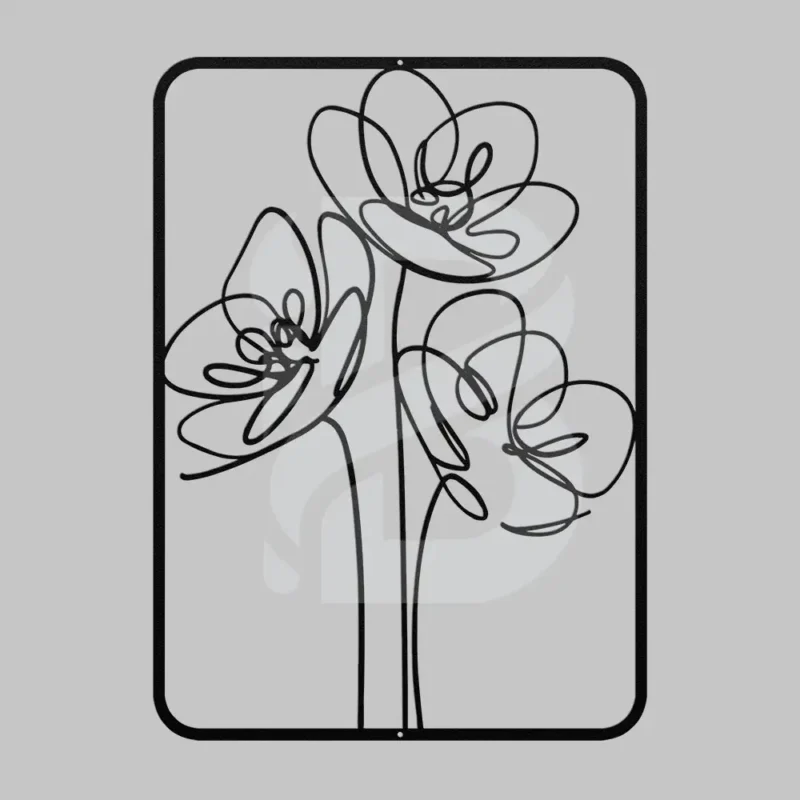
You might even see minimalist art that features an everyday object as the main focus, like a simple sketch of a chair.
Geometric prints and abstract canvases with just a few colors can also be considered minimalist art
Even art for kids can be minimalist, using basic shapes, repetition, and natural materials, like paper bag jellyfish or simple marker drawings.
A key element in many minimalist pieces is the use of negative space, which helps create a feeling of lightness and openness.
Explore our minimalist wall art piece here.
Not a fan of either minimalism or maximalism? explore other styles here
How Minimalist Wall Art Feels
Minimalist wall art often creates a feeling of calm and serenity in a room. The lack of clutter and negative space can give a sense of spaciousness and openness. Reducing visual distractions can help create clarity and focus, leading to a tranquil environment that encourages relaxation.
Minimalist art can also bring a sense of timeless elegance and sophistication to a space, as well as a feeling of harmony and balance with its simple compositions. Overall, it aims to create an uncluttered and peaceful atmosphere.
The simplicity of minimalist art can also promote a sense of mindfulness and contemplation, drawing your attention to the essential elements. A practical benefit of minimalist decor is that it’s often easier to maintain and keep clean, adding to calm and order.
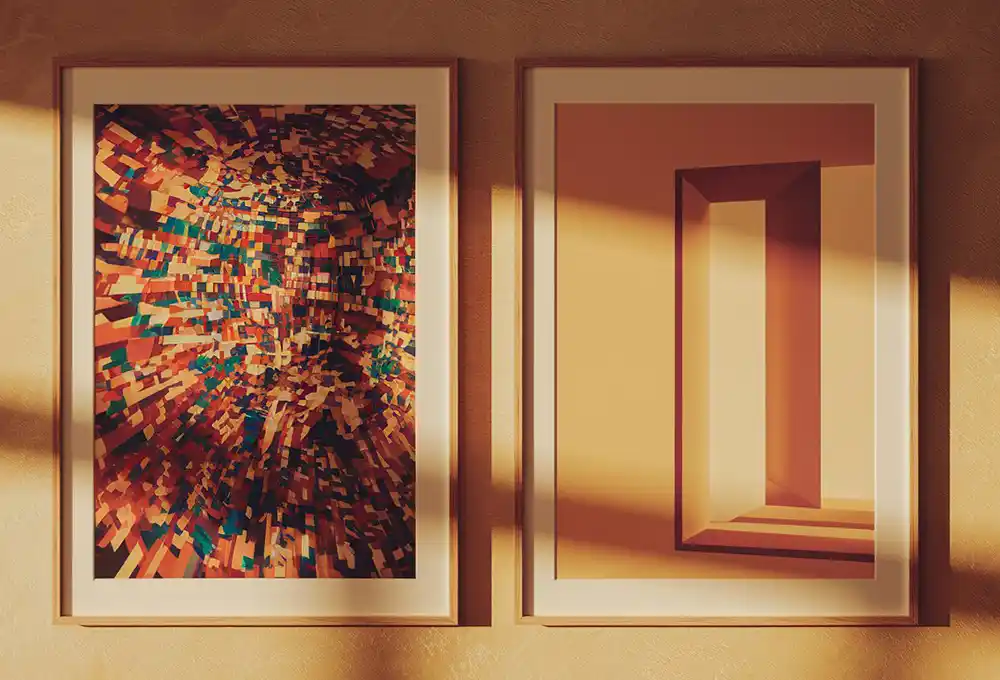
Choosing Between Maximalism and Minimalism: Which Decor Style is Right for You?
Deciding whether to go with maximalist or minimalist wall art comes down to several factors:
- Personal Taste and Personality: If you have a bold and expressive personality and love surrounding yourself with vibrant designs and collections, maximalism might be perfect for you. On the other hand, if you prefer simplicity, organization, and a calm environment, minimalism might be more your style. Ultimately, the choice reflects how you want your living space to feel and what you want it to say about you.
- Size of the Room: If you have a smaller room, minimalist art with its open feel can help make the space seem larger. In larger rooms with big, empty walls, maximalist art can be a great way to fill the space and create an interesting focal point. The key is to choose a style that feels balanced with the size of your room.
- Existing Decor and Style: Look at the furniture and other decorations you already have. Minimalist art will likely fit well if it is simple and has neutral colors. Minimalist art is quite versatile and can work with many different styles. Maximalism might be a natural fit if your current decor is more colorful and eclectic.
- Purpose of the Room: Consider how you use the room you’re decorating. For rooms where you want to relax and feel peaceful, like bedrooms or home offices, minimalist art can create a calming atmosphere. For more social and lively spaces like living rooms, maximalist art can add energy and be a great conversation starter.
- Desire for Simplicity vs. Abundance: Do you prefer a clean, uncluttered look with just the essentials? If so, minimalism is for you. Or do you love being surrounded by your favorite things and expressing your personality through a rich display? Then, maximalism will likely make you feel more at home.
- Combining Both Styles: You don’t necessarily have to choose just one! You can use a minimalist approach for most of your room and have a maximalist gallery wall as a focal point. Or you can have a generally maximalist space with a few simple minimalist pieces to give your eyes a break. Keeping a similar color scheme or theme can tie these contrasting styles together.
Here’s a quick look at the main differences:
| Aspect | Minimalist Wall Art | Maximalist Wall Art |
| Color Palette | Neutral tones (white, black, gray, beige) | Bold and vibrant colors |
| Design Complexity | Simple and clean | Intricate and layered |
| Space Utilization | Focus on negative space | Fills most or all available space |
| Mood | Calm and serene | Lively and energetic |
| Best For | Modern, uncluttered homes | Eclectic, creative spaces |
| Personalities Suited | Those valuing simplicity and calm | Those who love bold, expressive designs |
Frequently Asked Questions (FAQs)
What is the main difference between maximalist and minimalist wall art?
Minimalist art follows the idea of “less is more,” using only essential elements, few colors, and simple shapes. Maximalist art embraces “more is more,” featuring many colors, patterns, textures, and layers.
Does minimalist art have to be black and white?
No, while black and white and other neutral colors are standard, minimalist art can include subtle colors or even a single pop of color. The focus is on simplicity, not necessarily the absence of all colors.
Can maximalist art look cluttered?
Yes, it can if not planned well. However, maximalist art aims to create a visually rich and engaging space, not just a messy one. A thoughtful arrangement and a cohesive color story can help avoid a cluttered look.
Is one style more expensive than the other?
Neither style is inherently more expensive. Minimalism might cost more for a few high-quality pieces, while maximalism could add up when buying multiple items. Both styles can be adapted to any budget, depending on the quality and sources of the artwork you choose.
Can I mix maximalist and minimalist art in the same room?
Absolutely! Combining these styles can create a unique and balanced look. Try using minimalist art as a foundation and adding a few bold maximalist pieces, or create distinct zones in your room with different styles.
Why does Gen Z like maximalism?
Gen Z loves maximalism for its bold self-expression, vibrant colors, and nostalgic, eclectic designs. It makes spaces unique and visually striking, perfect for social media.
What kind of frames work best for each style?
For minimalist art, simple frames in neutral colors or frameless presentations often enhance the clean look. Maximalist art offers more freedom; you can use ornate frames, mix different styles of frames, or even hang unframed pieces as part of a layered display.
Explore our wall art
Conclusion
Whether you prefer the calm simplicity of minimalism or the bold excitement of maximalism, your wall art choices help tell your personal story in your home. Consider your space, your personality, and the feeling you want to create when choosing between these two distinct styles.
The best part? Wall art is easy to change. You can try minimalism now and switch to maximalism later or mix elements from both styles to create a look that’s uniquely yours. Your walls are your canvas – have fun decorating them!
References
- Maximalism | explore the art movement that emerged in Global – Ilustromania, https://www.ilustromania.com/artistic-movements/maximalism
- Maximalism – Wikipedia,, https://en.wikipedia.org/wiki/Maximalism
- https://www.ilustromania.com/artistic-movements/maximalism: Make the Most of Maximalism | Communication Arts
- Minimalism – Students | Britannica Kids | Homework Help, 2025, https://kids.britannica.com/students/article/Minimalism/312521
- Key Principles of Maximalist Home Decor Style I Spiffy Spools. https://www.spiffyspools.com/maximalist-decor-design/

